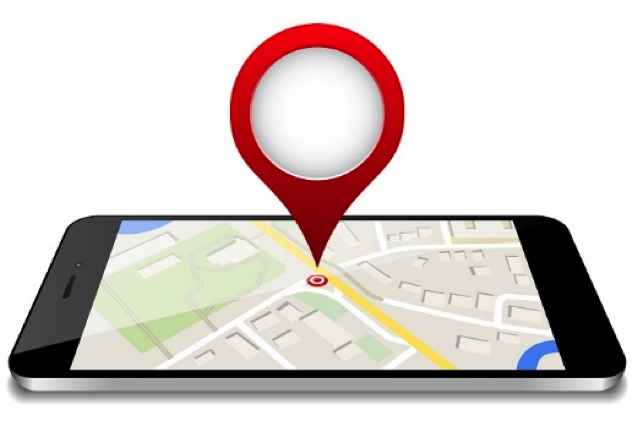If you’ve been following this Fast Track SEO Course from the beginning you should pat yourself on the back.
Congratulations: you’ve done it. You’ve got SEO under your belt…
…But now there’s just the buckle and braces to get you locked in.
We still need to introduce you to something of a game changer: local SEO and the rise of mobile.
Do you remember when we looked at the SERPs and the changing face of SEO way back at the start of this course?
Let’s just refresh your memory about what we said about ‘The anatomy of a SERP’ and ‘How SEO has changed’ because a lot of water has flowed under the bridge since then.
You were still an SEO novice then, rather than an SEO godfather.

With all due respect, don, we’d like to just recap on a few things we mentioned back in the day that are going to be really relevant right now.
- We learnt that there are more mobile searches now than desktop searches.
- We saw how Google is actively punishing sites that are not mobile friendly.
- We discussed how mobile search was changing the way we searched, through the use of voice search and the use of your location to determine which search results were returned.
- And, finally, we saw the presence of the map and the ‘local 3-pack’ in the search results.
The truth is that mobile and local SEO are taking over a fair bit of territory.
And that should be your turf.
You need to understand just how they are operating if you are going to continue to command the respect that you are due.
Let’s understand what local SEO brings to the table. And then we’ll be able to lead our merry dance all over the SERPs.
Nothing will be able to stop us.
What is local SEO?

Look into our eyes – you are feeling sleepy. Very sleepy.
You must forget everything you have ever been told about SEO.
We’re truly sorry about this.
You have just mastered SEO, but we would now like you to forget everything you have just learnt.
Because local SEO just doesn’t work in the same way.
If it’s any consolation local SEO is much more straightforward than its rather sensitive bigger brother. So, having come so far already, this will be a breeze for you.
When you wake up we’re going to show you exactly what local SEO is, why you need it and then we’ll show you what to do to, quite literally, put yourself on the map.
When we click our fingers, you will open your eyes.
And we shall begin.

Understanding Local SEO
Let’s be clear about one thing: local SEO is no bolt on.
Local SEO is essential for any business or brand that wants to continue to enjoy long-term success across search engines.
Local search has grown massively over the last few years, paralleling and influenced by, as we have seen, the rise of smartphone usage and the better connectivity we now enjoy while we are out on the town, in the city or lost in the country.
In fact, nearly half of all mobile queries have local intent. (Just think about the sorts of searches you carry out on your mobile and you’ll see exactly what we mean.)
And this fact is good for your business if you have an office, retail or physical presence.
Think about it for a second. What chance have you got to appear in a nationwide search for guitar lessons?
Just imagine the competition.
But, a search for ‘guitar lessons’ that is made from Brighton, where you are based?

Excellent.
Local search results give you the chance to appear for searches that are directly relevant for your business. And they filter out all the nationwide chaff to give you the chance to stand tall among the local wheat.
What’s so different about local SEO?
Local SEO is focused on providing results that are relevant to a searcher based on their current location.
And the ways of ranking for local SEO are radically different to those we associate with traditional SEO.
We’re going to show you exactly how you can optimise your site for local searches but, to introduce this, let’s first look at how it differs in its on-page optimisation, off-page optimisation and social signals.
On-page optimisation
Local SEO relies on a simple algorithm that is used to ‘place’ your business via local keywords and your NAP (your business name, address and phone number).
Traditional SEO relies on a complex algorithm that is used to assess quality and relevance.
Local SEO tends to have cosmetic updates. Where larger updates have occurred (e.g. Panda) these remain not very well documented.
Traditional SEO has regular, large scale updates to ranking factors. These are very well documented (e.g. Penguin).
In local SEO optimisation aims to help Google index a location. This is done via links to Google My Business page and Schema markup.
In traditional SEO optimisation aims to help Google index a site. This is done via site structure and internal links.
Off-page optimisation
For local SEO citations are the main ranking factor.
For traditional SEO links are the main ranking factor.
The relevancy of the listing site is important for local SEO.
The relevancy of the linking site is important for traditional SEO.
NAP citations on local directories are central as local SEO ranking factors.
Directories are increasingly downgraded as a traditional SEO ranking factor.
Consistency of use of NAP and Categories is needed for local SEO.
Diversity of anchor text is essential for traditional SEO.
Social factors
Reviews associated with NAP are crucial for local SEO.
Social signals have disputed importance in traditional SEO but may be beneficial.
Google My Business and trusted local listings sites carry the local clout.
Facebook, Twitter, LinkedIn, Pinterest and Instagram rule the traditional roost.
With local SEO volume and freshness matter but not more than a consistent history of reviews.
With traditional SEO freshness and volume are important.
A sudden influx of reviews can be damaging – you need a steady local stream.
Going viral is one of the best things that could ever happen for traditional SEO.
Don’t worry, we’ll tease out exactly what this all means for you in the next post.
For now, though, just get the idea that the tricks and tips you have learnt for traditional SEO may not be directly transferrable to its localised version.
Let’s just make it really easy to grasp.
| Local SEO traits and features | Traditional SEO traits and features |
| Citations | Links |
| Consistency | Diversity |
| Steady | Viral |
| NAP & Category | Keywords |
| Reviews | Tweets and posts |
| Listings | Linked content |
| Cosmetic algorithm changes | Large scale algorithm updates |
Get the idea?
Good, let’s get those local listings for you then.
(In our next post…..)
Find out more
- See Google’s infographic about the constantly connected consumer, the rise of mobile and the importance of local search here.
- Find out how to give Pigeon the bird here.
- Still not convinced by local SEO? Let’s get Uncle Greg Gifford to have a quiet word: he’s over here.
All the previous posts in this series can be found here.
For the complete version of this Fast track SEO course head over to Amazon.
It’s yours for less than a fiver!

